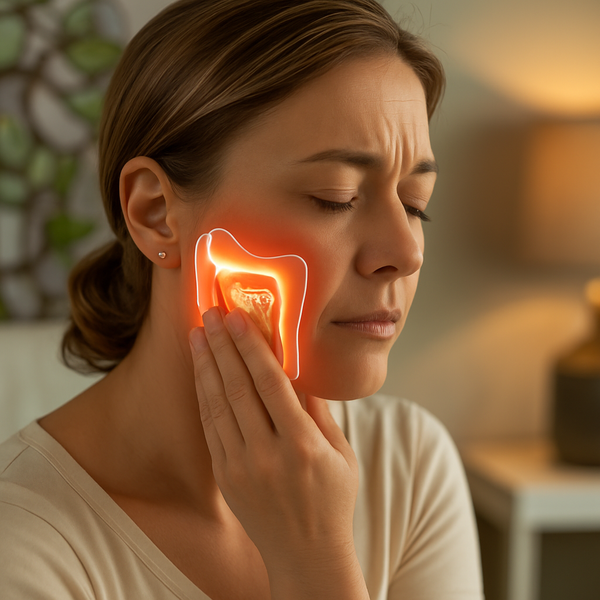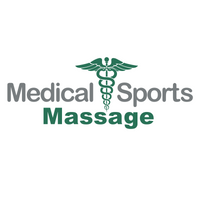Massage therapy may help relieve jaw pain connected to TMJ by easing muscle tension, improving joint mobility, and reducing strain that builds up in the neck and shoulders. This blog discusses common triggers, what to expect from massage for TMJ, and how consistent treatment can support better sleep and daily comfort.

Tired of Waking Up With Jaw Pain? Massage Therapy May Help Your TMJ
Denise Leslie
If your jaw clicks, clenches, or locks—and you wake up feeling like you’ve been chewing in your sleep you may be experiencing TMJ dysfunction or bruxism. These conditions can cause not just jaw pain but tension headaches, earaches, and facial discomfort that lingers for days.
At Medical & Sports Massage in Sandy Springs, we help clients like you find lasting relief with targeted medical massage therapy — and that includes jaw pain, too.

At Medical & Sports Massage in Sandy Springs, we help clients like you find lasting relief with targeted medical massage therapy—and that includes jaw pain, too.
TMJ stands for temporomandibular joint—the hinge that connects your jaw to your skull. When surrounding muscles become tight, overworked, or inflamed, it can trigger:
Jaw soreness or fatigue
Headaches near the temples or ears
Clicking, popping, or locking of the jaw
Neck and shoulder tension
Nighttime grinding or clenching (bruxism)
TMJ symptoms don’t always start in the jaw—they can present as facial tightness, tension headaches, or poor sleep. That’s why massage therapy offers more than surface relief: Massage gets to the root of the muscle dysfunction by reducing tension in the surrounding muscles, improving circulation, and creating space for proper jaw movement.
How Massage Therapy Helps TMJ and Bruxism?
Our licensed therapists work on the facial, jaw, and neck muscles that contribute to TMJ pain. Sessions may include deep tissue work, trigger point therapy, and gentle myofascial release—all focused on relieving the muscular tension behind your symptoms.
Improve jaw mobility and range of motion
Reduce the frequency of clenching or grinding.
Decrease headache and facial pain.
Calm the nervous system for better sleep.
Prevent patterns from returning with regular care.
Treatment may include:
Trigger Point Therapy – Releases knots and tension in key areas like the masseter, temporalis, and sternocleidomastoid.
Myofascial Release – Gently stretches and loosens the connective tissue (fascia) that can restrict movement.
Lymphatic Drainage – Reduces inflammation and fluid buildup that may contribute to pressure in the jaw and ear.
Cranial Work – Focuses on subtle shifts in the bones and soft tissues of the head and face to relieve pressure.

Our client feedback
Common TMJ Triggers You Might Overlook
TMJ issues don’t always start with the jaw. These factors may be contributing to your symptoms:
Posture: Forward head posture can tighten the jaw and neck.
Stress: Emotional tension often shows up in the jaw first.
Dehydration: Muscles need hydration to stay flexible.
Dental misalignment or missing teeth
Hormonal shifts
That’s why it’s important to take a holistic approach. A conversation with your dentist may also be helpful—especially if you're grinding your teeth at night or have a misaligned bite.
Treat for TMJ Relief

| Treatment Option | Clinical Benefits | Limitations |
|---|---|---|
| TMJ Massage Therapy Recommended | Releases tight muscles, improves circulation | Doesn't fix bite or jaw alignment |
| Night Guard (Dental) | Protects teeth while sleeping | Doesn't address muscle tension or jaw stress |
| Medications | Reduces pain and inflammation | Temporary relief; doesn’t stop clenching |
| Botox | Weakens jaw muscle contraction | Invasive; may reduce jaw function over time |
DIY Relief Tips Between Sessions
While professional massage can make a big difference, small daily habits can help reduce TMJ discomfort.. Download our free DIY TMJ Relief Tips Guide [HERE]
Inside, you'll learn:
Gentle stretches to relieve facial tension
Heat/cold guidance for flare-ups
How to talk to your massage therapist about jaw symptoms
What to mention to your dentist if you suspect grinding
Ready to Feel Relief?
TMJ and bruxism pain can sneak into every part of your day, from chewing to concentrating. You don’t have to live with it. A focused, therapeutic massage can help you feel like yourself again—calm, relaxed, and pain-free. Book your massage today
Free consultations available. Let’s help you Live Life Pain Free.
What People Ask About TMJ and Massage
You should see a professional if jaw pain is persistent, interferes with eating or speaking, or leads to headaches. Massage therapy can relieve muscular tension, but we often collaborate with dentists and other healthcare providers to ensure full-spectrum TMJ care.
TMJ massage should not be painful. Our technique is gentle yet targeted, and while you may feel mild pressure or initial sensitivity, most clients experience noticeable relief and deep relaxation by the end of the session.
Every situation is unique, but many clients report improvement after 1–3 sessions. For chronic or long-standing TMJ issues, weekly or bi-weekly therapy can help retrain muscles and reduce recurring tension patterns.
Conclusion
Struggling with TMJ dysfunction or waking up with jaw pain doesn’t have to be your daily norm. TMJ massage therapy offers targeted relief, helping to relax tight facial and neck muscles while supporting effective bruxism treatment. Many patients experience noticeable jaw pain relief and improved mobility after incorporating massage into their routine. When combined with a comprehensive TMJ treatment plan, massage therapy can be a powerful step toward lasting comfort and healthier jaw function.
About The Author
Denise Leslie is a powerhouse mother, entrepreneur, and advocate for pain-free living. With a passion for healing and promoting health and wellness, As a dedicated therapist, Denise is committed to empowering others on their journey to optimal well-being. She understands the importance of community support and never stops serving those around her.

